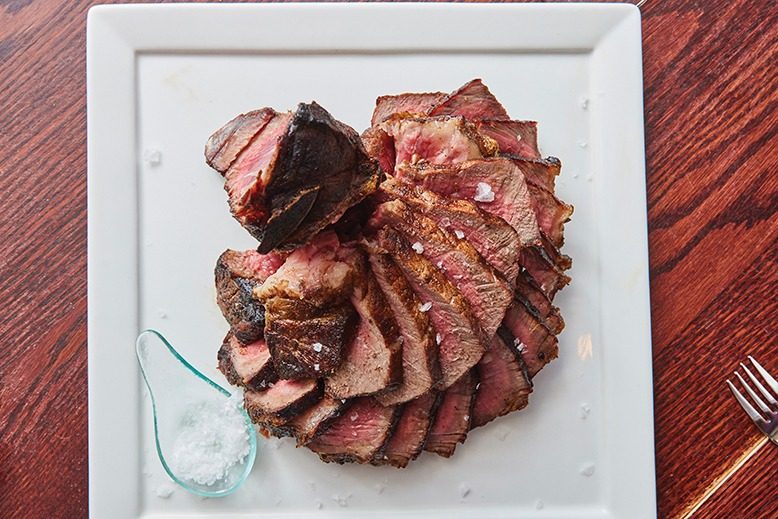
Beef is a four-letter word we intrinsically understand and, more often than not, salivate to. But as explained below, it isn’t just one thing. Brush up on your terminology, then start exploring the best steakhouses in New Jersey.
NEW YORK STRIP
From the area just behind the ribs. Though not quite as tender as ribeye or tenderloin, the New York strip packs bold beef flavor and an ideal blend of lean and fat.
RIB EYE
Ultra-flavorful, this comes from the cow’s upper rib area and is essentially from prime rib roast cut into individual portions. Rib eye is richly marbled, which allows it to retain its juiciness even when cooked over very high heat.
COWBOY STEAK
A bone-in rib eye with a short-frenched bone. To french a bone is to trim off fat and sinew.
TOMAHAWK STEAK
A bone-in-rib eye butchered to leave at least 5 inches of rib bone attached. The bone itself can be up to 20 inches long, but often is cut to less than 10 inches. The long rib bone looks like a hatchet or Native American tomahawk.
FILET MIGNON
Sometimes referred to as tenderloin or just as filet, it’s always boneless and cut from under the cow’s ribs. Incredibly tender, with mild flavor and fine grain, it’s generally the most expensive cut of steak.
T-BONE
Serious carnivores usually have a special fondness for T-bones. On one side of the bone, there’s a buttery tenderloin (filet mignon) that is always smaller than the tenderloin on its big brother, the porterhouse. On the other side of the bone is a bold, beefy New York strip. You are essentially getting two different steaks in one.
PORTERHOUSE
If you’ve ever seen a porterhouse next to a T-bone, you may have thought they were the same. Cut from the same section of the cow, the porterhouse simply has a larger filet mignon. In fact, to classify as a porterhouse, the USDA requires that the steaks be cut to a thickness of at least 1.25 inches, and you will often find them cut to 3 inches or more. These steaks have a fantastic flavor and don’t generally need much seasoning.
DRY AGING
Hanging full sides or very large cuts in a cool, humid room for generally 30 days or more—in rare cases, as much as 90 days. The more the steak dry ages, the more moisture it loses, up to 20-25 percent of the starting weight. This heightens the taste and tenderness—and, given the time invested, the cost on the menu. Wet aging in sealed plastic also tenderizes, but not as much.
Chef William Roll is assistant professor of culinary arts at Brookdale Community College in Lincroft.
Get a weekly serving of the hottest New Jersey food news sent right to your inbox with our Side Dish newsletter.



